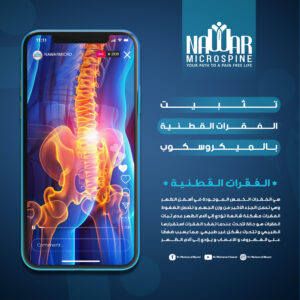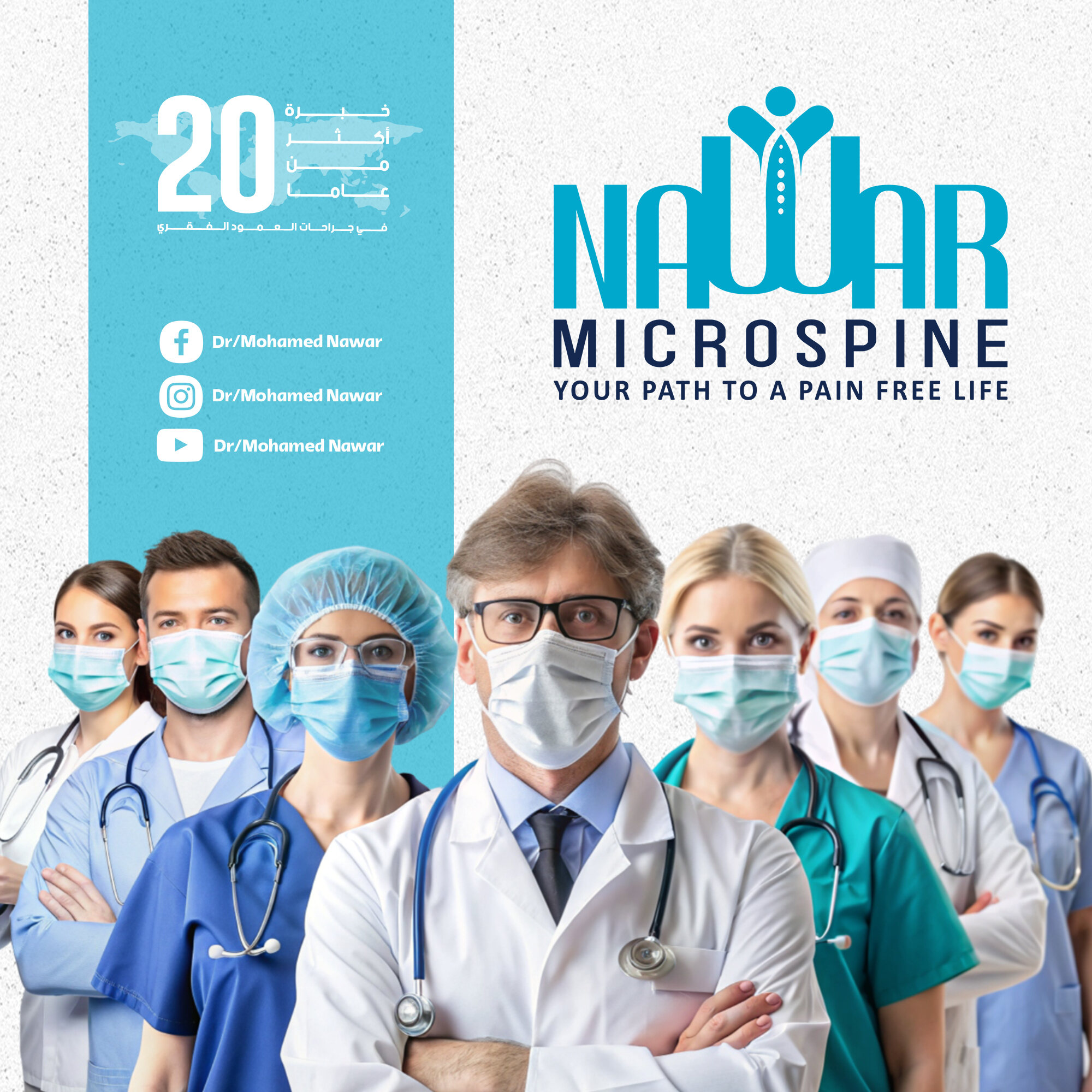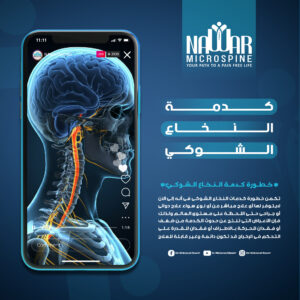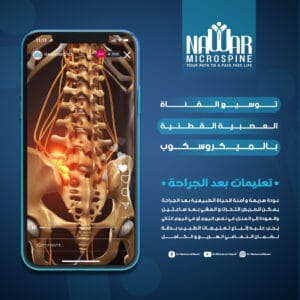
Lumbar Spine Fixation with the Microscope
The Precise and Safe Solution for Spinal Problems Lumbar spine fixation under the microscope is one of the most advanced, safe, and effective techniques for treating spinal conditions such as

Lumbar disc herniation is one of the most common causes of lower back pain. It occurs when the herniated disc presses on the surrounding nerves, leading to severe pain, numbness in the legs, and difficulty walking or moving. Microscopic lumbar disc removal is considered one of the most advanced, safest, and most effective techniques for treating this condition.
A spinal disc is a rubber-like cushion located between the vertebrae of the spine. It acts as a shock absorber and facilitates smooth movement. The disc consists of a tough fibrous outer capsule that surrounds a gelatinous inner core.
When the disc turns from a blessing into a burden, lumbar disc herniation occurs as a portion of the disc protrudes and compresses the surrounding nerves. This leads to pain, numbness in the legs, and sometimes issues with bladder control or sexual function in men.
Early warning signs to prevent complications include:
Some cases require immediate medical attention, such as:
Diagnosis involves a detailed study of symptoms, thorough physical examination, and analysis of imaging results such as MRI, CT scans, and X-rays to identify the root cause and plan the right treatment.
Not necessarily. It’s important to distinguish between a normal disc bulge and a pathological herniation. A normal bulge is a mild, age-related protrusion that causes no symptoms, whereas a pathological herniation is larger and compresses the nerves, requiring treatment.
Patients should consult a neurosurgeon or spinal surgery specialist to evaluate their condition and determine the most appropriate treatment.
Surgery is required when there’s a large herniation accompanied by warning signs, or if pain persists for more than three months despite conservative treatment.
The surgical microscope offers the most precise and safest solution for lumbar disc removal. It provides a clear and magnified view of nerves, discs, and surrounding tissues, allowing the surgeon to remove the herniated disc accurately, minimize complications, and accelerate recovery.
Dr. Mohamed Nawar utilizes state-of-the-art surgical technologies, including intraoperative imaging, neural monitoring, and navigation systems for highly accurate surgical guidance.
In cases where full disc removal is necessary, an artificial disc may be used as a substitute, allowing the vertebrae to maintain natural movement and flexibility.
These are non-surgical interventions aimed at temporary pain relief but do not address the root cause. Spinal pain specialists—usually anesthesiologists—perform these limited interventions to control pain for a short period.
They are used when microscopic surgery under general anesthesia is not possible due to conditions like heart weakness, kidney failure, or advanced tumors.
A pioneer in precise spinal surgeries, Dr. Nawar employs the latest surgical microscopes and advanced micro-instruments. With over 20 years of experience in microsurgical procedures, he is among the most skilled and trusted spinal surgeons, ensuring maximum safety and success for his patients.
Generally, these procedures are safe and performed under local anesthesia in about 30 minutes. However, in some cases, they may delay necessary surgical intervention, leading to irreversible complications.
إذا كنت تحتاج إلى الإطلاع على مصادر توضيحية أكثر، يمكنك مشاهدة الفيديوهات التالية:
If you experience any symptoms of lumbar disc herniation, you should consult your doctor immediately to identify the underlying cause and create an appropriate treatment plan. Early diagnosis ensures better outcomes and prevents serious complications.


The Precise and Safe Solution for Spinal Problems Lumbar spine fixation under the microscope is one of the most advanced, safe, and effective techniques for treating spinal conditions such as

Preparations before spinal surgery Its steps and recovery instructions Spine surgery is a significant step in treating various back and neck conditions. It requires careful preparation, a clear understanding of

A Hidden Threat to the Spine A spinal cord contusion is one of the most serious spinal injuries, as it threatens a person’s ability to move and feel sensations. If

A Revolution in Precision Spine Surgery الرئيسية The field of spine surgery is witnessing continuous advancement, with one of the most significant breakthroughs being the use of the surgical microscope

Cervical spinal canal stenosis is one of the most common spinal problems, particularly among older adults. It causes pain, numbness, and tingling in the limbs and can lead to serious